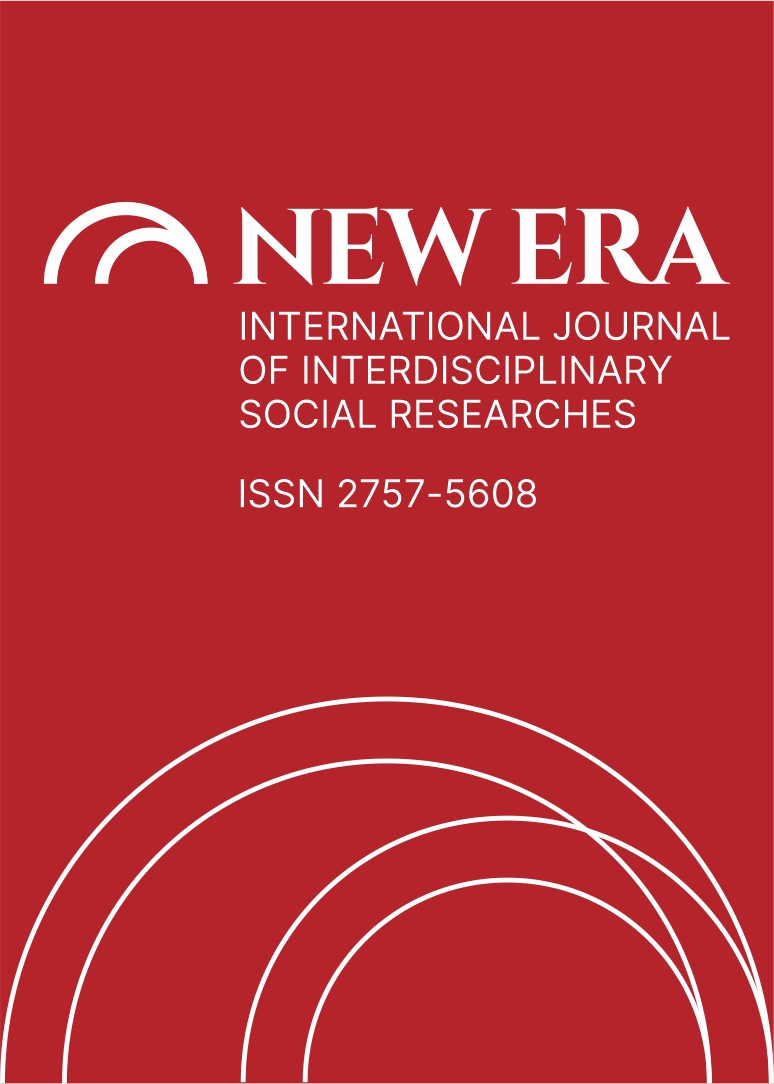DİJİTALLEŞMENİN TEDARİK ZİNCİRİ VE TEDARİKÇİ SEÇİMİ YAKLAŞIMLARINA ETKİLERİ: ANALİTİK HİYERARŞİ PROSESİ ÜZERİNE BİR UYGULAMA
DOI:
https://doi.org/10.5281/zenodo.8186394Anahtar Kelimeler:
Dijitalleşme, Tedarik Zinciri, Tedarik Zinciri Yönetimi, Tedarikçi SeçimiÖzet
Bu çalışmanda tedarikçi seçim problemi, Analitik Hiyerarşi Prosesi kullanılarak makine üreticisi bir işletmenin tedarik seçim sistemi üzerinden gerçekleştirilmiştir. Bu doğrultuda araştırmanın yöntemi Analitik Hiyerarşi Prosesi ile tedarikçi seçimi olarak ifade edilebilmektedir. Bu yönteme bağlı olarak tedarikçi seçiminde dikkate alınacak ana kriterler fiyat, kalite, garanti, teknik servis ve teslimat olarak belirlenmiş, bu kriterlerin alt kriterleri de yine işletmenin tedarik sorumlularından alınan bilgiler doğrultusunda şekillendirilmiştir. Bu bağlamda fiyat alt kriterleri (ıskonto, vade, sabit kur, ödeme şekli), garanti alt kriterleri (garanti süresi, iade/değişim), teknik servis alt kriterleri (yerinde servis, tedarikçide servis, servis süresi), kalite alt kriterleri (birinci kalite, ikinci kalite, üçüncü kalite) ve teslimat alt kriterleri (kapıya teslim, işletmede teslim) üzerinden en iyi tedarikçi seçiminin belirlenmesi yoluna gidilmiştir.
Araştırmada, ana kriterler içerisinde kalitenin birinci sırada yer aldığı ve bunun ardından ikinci sırada fiyat kriterinin yer aldığı saptanmıştır. Kalite kriterine bağlı olarak Tedarikçi-1 ilk sırada yer alırken fiyat kriterinde Tedarikçi-2 ön plana çıkmaktadır. Bunlarla birlikte ana kriterler altında oluşturulan alt kriterlere bağlı olarak bütüncül bir değerlendirme yapılmış ve analizler neticesinde işletmenin T1>T2>T3>T4 olarak önem sırasına aldığı tedarikçilerin tüm kriterler doğrultusunda T1>T3>T2>T4 önem sıralamasına alınabileceği sonucuna ulaşılmıştır.
Referanslar
Battelle, J. (2005). The Search: How Google and Its Rivals Rewrote the Rules of Business and Transformed Our Culture. Portfolio.
Boran, F. E., Genç, S., Kurt, M., & Akay, D. (2009). A multi-criteria intuitionistic fuzzy group decision making for supplier selection with TOPSIS method. Expert Systems with Applications, 36(8), 11363-11368.
Brynjolfsson, E., & Hitt, L. M. (2000). Beyond computation: Information technology, organizational transformation and business performance. The Journal of Economic Perspectives, 14(4), 23-48.
Brynjolfsson, E., & McAfee, A. (2014). The Second Machine Age: Work, Progress, and Prosperity in a Time of Brilliant Technologies. W. W. Norton & Company.
Bughin, J., & Hazan, E. (2017). How artificial intelligence can deliver real value to companies. McKinsey Global Institute.
Chen, C. T., & Chao, C. A. (2012). Supplier selection using consistent fuzzy preference relations. Expert Systems With Applications, 39(3), 3233-3240.
Chen, H., Chiang, R. H., & Storey, V. C. (2012). Business Intelligence and Analytics: From Big Data to Big Impact. MIS Quarterly, 36(4), 1165-1188.
Choi, T. Y., & Hartley, J. L. (1996). An exploration of supplier selection practices across the supply chain. Journal of Operations Management, 14(4), 333-343.
Chui, M., Manyika, J., Miremadi, M., Henke, N., Chung, R., Nel, P., & Malhotra, S. (2016). Where machines could replace humans—and where they can’t (yet). McKinsey Quarterly, https://www.mckinsey.com/capabilities/mckinsey-digital/our-insights/ where-machines-could-replace-humans-and-where-they-cant-yet, 14.06.2023
Dabbish, L., & Kraut, R. (2006). Email overload at work: An analysis of factors associated with email strain. Proceedings of the 20th Anniversary Conference on Computer Supported Cooperative Work, 431-440.
Degraeve, Z., Labro, E., & Roodhooft, F. (2000). An evaluation of vendor selection models from a total cost of ownership perspective. European journal of operational research, 125(1), 34-58.
Ghodsypour, S. H., & O’Brien, C. (2001). The total cost of logistics in supplier selection, under conditions of multiple sourcing, multiple criteria and capacity constraint. International journal of production economics, 73(1), 15-27
Ho, W., Xu, X., & Dey, P. K. (2010). Multi-criteria decision making approaches for supplier evaluation and selection: A literature review. European Journal of Operational Research, 202(1), 16-24.
Kaplan, A. M., & Haenlein, M. (2010). Users of the world, unite! The challenges and opportunities of Social Media. Business Horizons, 53(1), 59-68.
Keskin, H. (2015). Tedarik Zinciri Yönetimi- Arka Planı Gelişimi ve Güncel Uygulamaları. 2. Baskı, Nobel Yayınevi.
Laudon, K. C., & Traver, C. G. (2013). E-commerce. Pearson.
Manyika, J., Chui, M., Brown, B., Bughin, J., Dobbs, R., Roxburgh, C., & Byers, A. H. (2011). Big data: The next frontier for innovation, competition, and productivity. McKinsey Global Institute.
Müller, J. M., Kiel, D., & Voigt, K. I. (2018). What Drives the Implementation of Industry 4.0? The Role of Opportunities and Challenges in the Context of Sustainability. Sustainability, 10(1), 247.
OECD (2017). The Next Production Revolution: Implications for Governments and Business. OECD Publishing.
O'Reilly, T. (2005). What Is Web 2.0: Design Patterns and Business Models for the Next Generation of Software. Communications & Strategies, 1(17), 1-21.
Romanosky, S. (2016). Examining the costs and causes of cyber incidents. Journal of Cybersecurity, 2(2), 121-135.
Rüßmann, M., Lorenz, M., Gerbert, P., Waldner, M., Justus, J., Engel, P., & Harnisch, M. (2015). Industry 4.0: The Future of Productivity and Growth in Manufacturing Industries. Boston Consulting Group.
Saaty, T. L. (1980). The Analytic Hierarchy Process. McGraw-Hill.
Schwab, K. (2017). The Fourth Industrial Revolution. Currency.
Sundararajan, A. (2016). The Sharing Economy: The End of Employment and the Rise of Crowd-Based Capitalism. The MIT Press.
Wang, G., Gunasekaran, A., Ngai, E. W., & Papadopoulos, T. (2016). Big data analytics in logistics and supply chain management: Certain investigations for research and applications. International Journal of Production Economics, 176, 98-110.
West, J. (2015). How mobile is changing business. Communications of the ACM, 58(12), 46-52.
Zhu, K. (2004). The complementarity of information technology infrastructure and e-commerce capability: A resource-based assessment of their business value. Journal of Management Information Systems, 21(1), 167-202.
Zhu, K., & Kraemer, K. (2002). E-Commerce Metrics for Net-Enhanced Organizations: Assessing the Value of e-Commerce to Firm Performance in the Manufacturing Sector. Information Systems Research, 13(3), 275-295.
İndir
Yayınlanmış
Nasıl Atıf Yapılır
Sayı
Bölüm
Lisans
Telif Hakkı (c) 2023 NEW ERA INTERNATIONAL JOURNAL OF INTERDISCIPLINARY SOCIAL RESEARCHES

Bu çalışma Creative Commons Attribution-NonCommercial 4.0 International License ile lisanslanmıştır.


